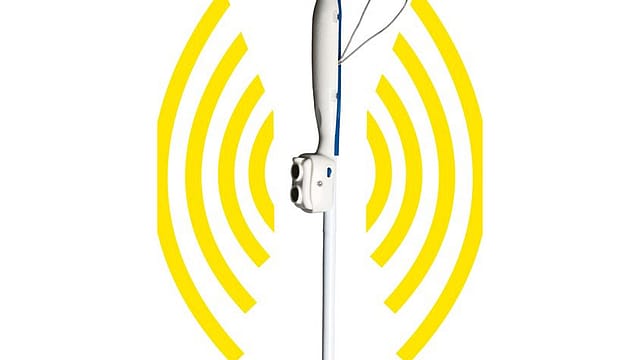Innovation sides with the blind
ADVERTISEMENT

The visually impaired and blind have used canes to assist them in finding their way for centuries, but the white cane was not introduced until 1921. James Biggs, a Bristol, England-based photographer, lost his sight in an accident and decided to paint his walking stick white so that he could be noticed in his neighbourhood.
Ninety-odd years later, meet white cane 2.0, or SmartCane—a visionary idea that started out as a four-member student project at the Indian Institute of Technology, Delhi (IIT-D) in 2005.
The sensor-based device (a detachable unit mounted on the top fold of a traditional white cane) is set to improve navigation for the blind—detecting obstacles that are above knee height, for example, a metal barrier on the road, or even those that protrude into the natural environment, such as a tree branch.
The inbuilt ultrasonic sensors don’t just warn the user about obstacles but also convey distance information—up to 3 m outdoors and 1.8 m indoors—through vibrations (think bat-like echolocation). While that’s a huge improvement from the 0.5 m range of the normal white cane, the intensity of vibrations varies according to the distance from the object.
The sensors (adjustable according to the height of the person) can detect a 3 cm wide object from a distance of 3 m, providing sufficient time to react. The rechargeable lithium-ion battery, like those commonly found in mobile phones and digital cameras, can power the cane for 8 hours on a single charge.
December 2025
The annual Fortune 500 India list, the definitive compendium of corporate performance, is out. This year, the cumulative revenue of the Fortune 500 India companies has breached $2 trillion for the first time. Plus, find out which are the Best B-schools in India.
Dipendra Manocha, a global expert on technology needs and solutions for the blind, says independent and safe mobility is one of the biggest challenges for the visually impaired. “It is like walking in a minefield.” Manocha, who runs Saksham Trust, a Delhi-based NGO for the visually impaired, suggested the idea to Rohan Paul, then part of IIT-D’s Assistech programme (working on assistive technologies for the differently abled). Paul and three fellow students began researching and in two years, filed for a patent.
Paul is the only one of the creators of SmartCane still associated with the project; the others left once they graduated. Paul has managed to ensure that the project lost no focus, with funding of Rs 3 crore from Britain-based Wellcome Trust, and a helping hand from its industry partner, Chennai-based Phoenix Medical Systems.
For eight years, around 500 users from 30 organisations in 10 cities used the SmartCane prototypes and provided feedback. Paul says that each feature in the SmartCane has been suggested and ratified by users. Finally, last year, around 150 users validated the product as being ready for sale.
There are similar products available globally, including Palmsonar (a palm-attached electronic mobility aid), UltraCane (by Britain-based Sound Foresight Technology), and LaserCane (Attainability UK). But these have technology and design limitations—multiple outputs that are difficult to interpret, restricted gripping style, etc. More important, they are expensive, costing as much as Rs 65,000.
With 90% of the world’s visually impaired living in developing countries, according to the World Health Organization, these devices have not been able to cut ice. That’s where the SmartCane, priced around Rs 3,000, could change the game. (An ordinary white cane in India costs between Rs 80 and Rs 150.) “The price factors in the large volumes that we expect—10,000 units per year in three years,” says Paul.
With Nepal, Pakistan, Bangladesh, Sri Lanka, and most of Africa on the radar, Paul’s definitely expecting things to look up.
